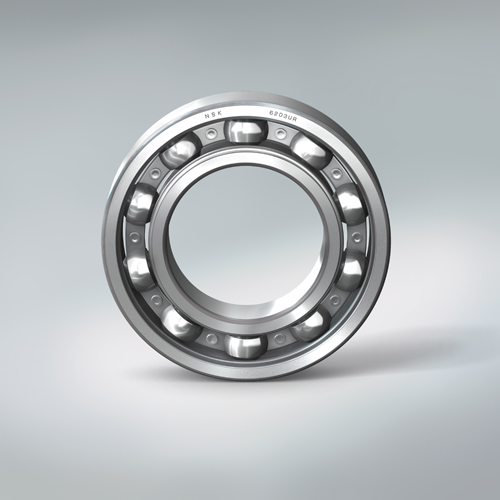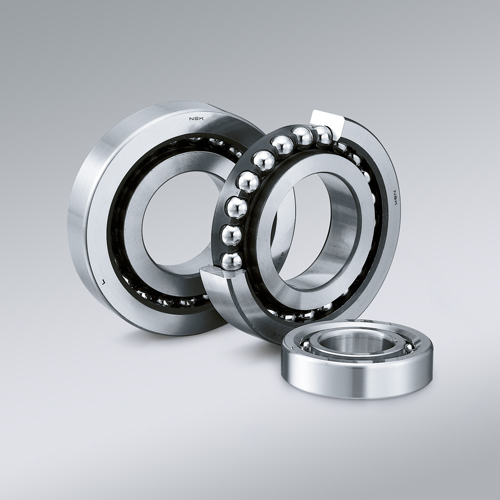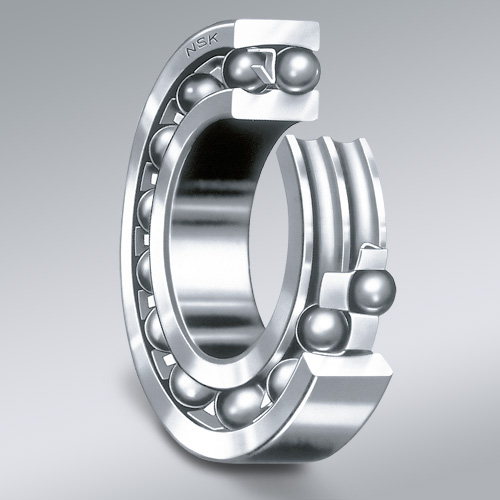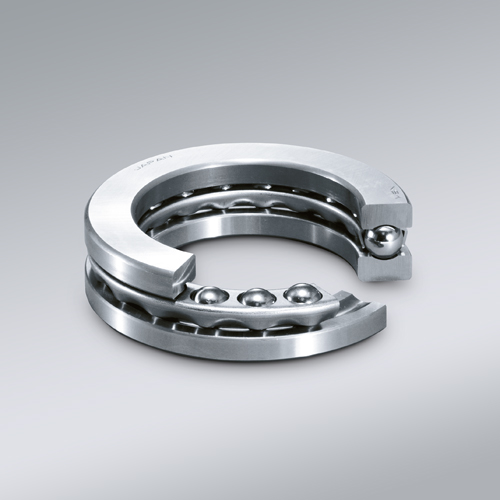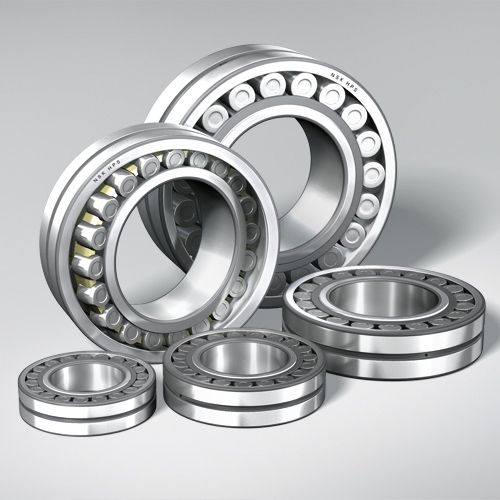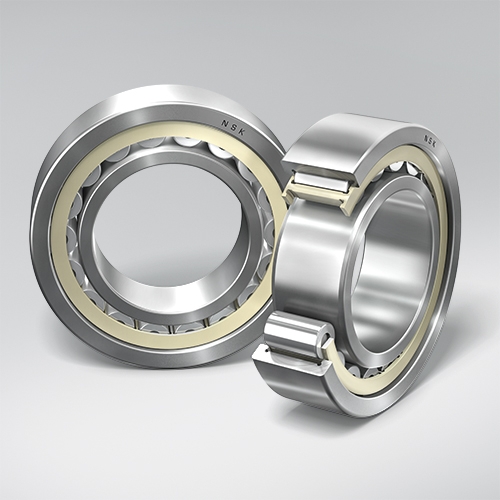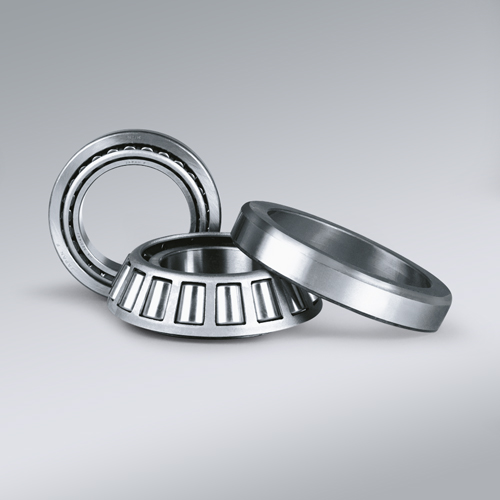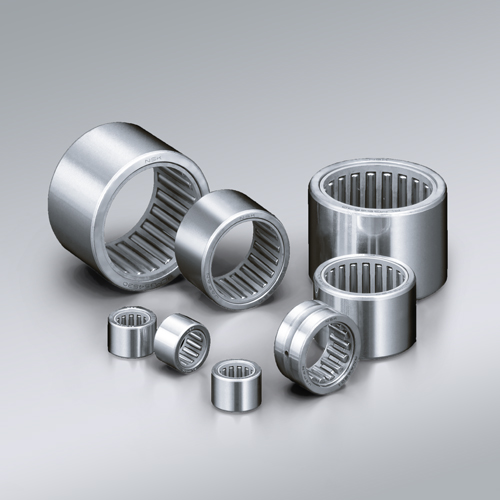Types
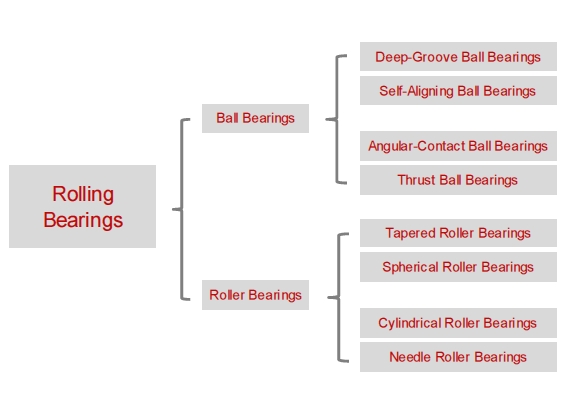
Ball Bearings
Ball Bearings utilize balls as the rolling elements. They are characterised by point contact between the balls and the raceways. As a rule, ball bearings rotate very quickly but cannot support substantial loads.
Deep-Groove Ball Bearings
The most commonly used bearings are Deep-Groove Ball Bearings. Thanks to their simple design, they are easy to maintain and not as sensitive to operating conditions thus are used in a wide range of different applicaitons.In addition to radial forces, they absorb axial forces in both directions. Their low torque also makes them suitable for high speeds. >>
Angular Contact Ball Bearings
Angular Contact Ball Bearings are characterised by a contact angle. This means that forces are transferred from one raceway to the other at a particular angle.Angular-contact ball bearings are therefore suitable for combined loads, where high axial forces have to be transferred in addition to radial forces. >>
Self-Aligning Ball Bearings
Self-Aligning Ball Bearings include a double row of balls guided by a cage and double row inner ring raceway but have the special feature of a continuous spherical outer ring raceway allowing the inner ring / ball complement to swivel within the outer ring. This is what enables a degree of self-alignment in the application.This type of bearing is recommended when alignment of the shaft and the housing (misalignment) are a problem and the shaft could deflect. Self-aligning ball bearings are most suitable for absorbing radial forces. >>
Thrust Ball Bearings
Thrust Ball Bearings consist of two bearing discs with raceways for the balls.Thrust ball bearings were developed solely for absorbing axial forces in one direction, meaning they can locate the shaft axially in one direction. >>
Roller Bearings
Roller Bearings are characterized by line contact. Line contact offers higher load rating than ball bearings of the same size; however the speed ability is lower than a ball bearing due to the increased friction of a contact line.
Spherical Roller Bearings
Spherical Roller Bearings are very robust and work on the same principle as Self-aligning bearings with the exception that they use spherical rollers instead of ball rollers allowing higher loads to be supported. This can compensate for misalignments between the shaft and the housing.Spherical roller bearings are suitable for absorbing high radial loads and moderate axial loads. >>
Cylindrical Roller Bearings
Cylindrical Roller Bearings use line contact between the rolling elements and the raceways, which optimizes the distribution of stress factors at the point of contact. This arrangement means that cylindrical roller bearings have a very high radial load rating.Depending on the design, they may also be able to transmit limited amounts of axial loads. >>
Tapered Roller Bearings
Tapered Roller Bearings have tapered raceways in the inner and outer rings with conical rollers arranged between them.Due to the contact angle, tapered roller bearings can absorb high radial and axial forces in one direction.
Tapered roller bearings are often combined in pairs to support axial forces in both directions. >>
Needle Roller Bearings
Needle Roller Bearings are a special type of cylindrical roller bearing which contain long, thin rolling elements, known as needle rollers. The ratio of diameter to length is between 1:3 and 1:10.Needle roller bearings have a high load rating and are only suitable for radial forces.
If space is constricted, needle bearings can be a good solution. >>



